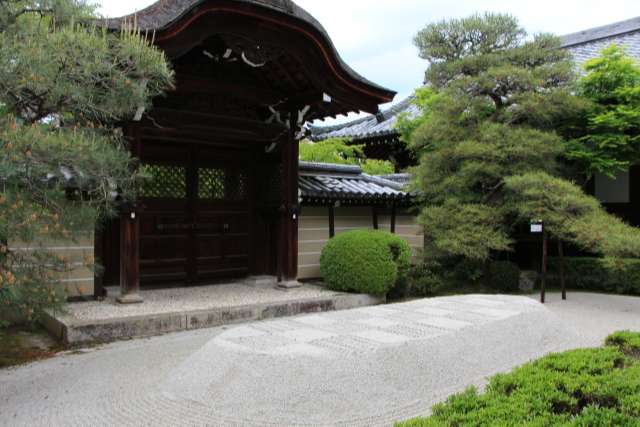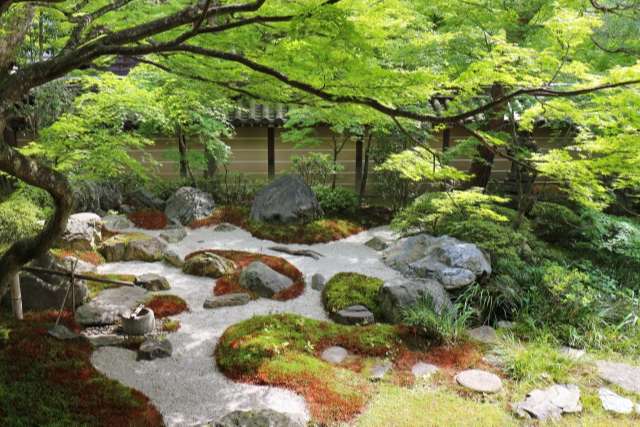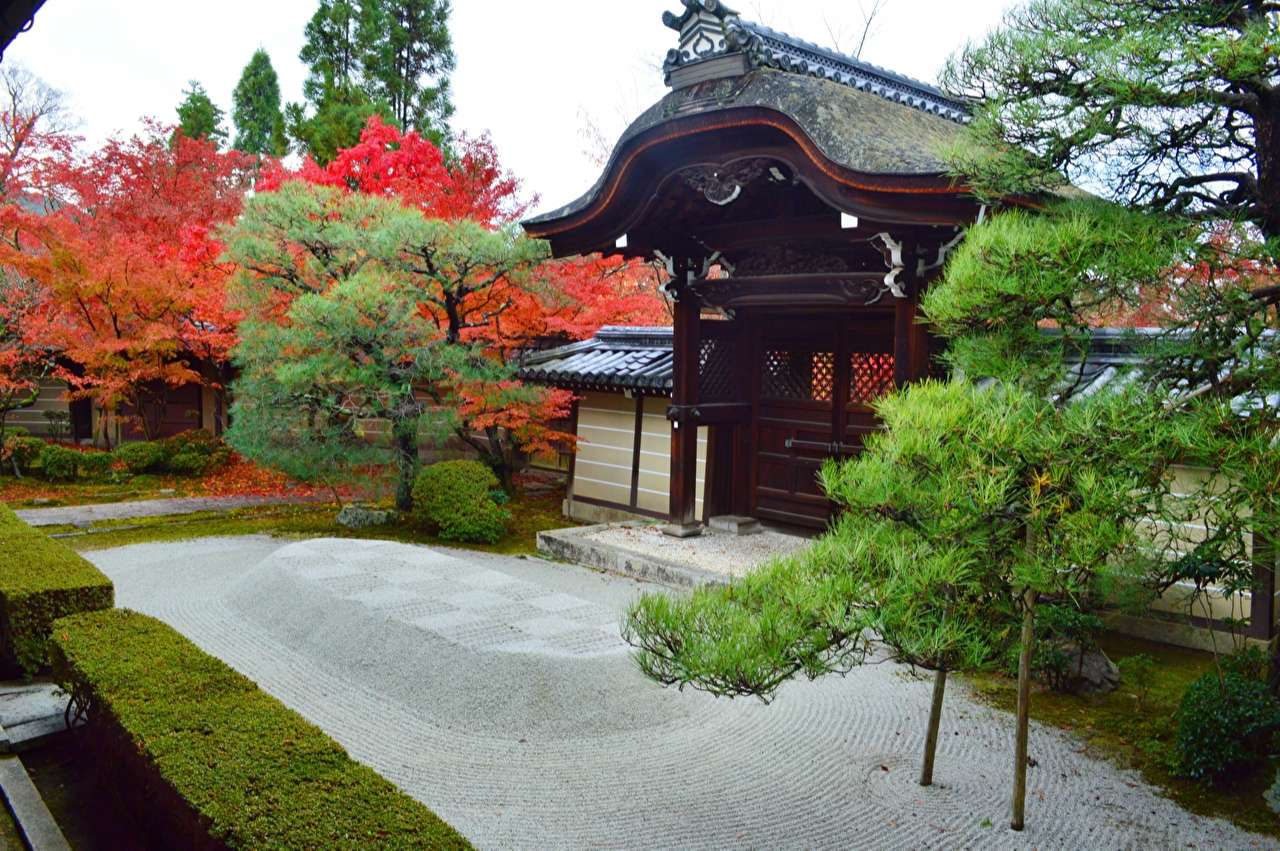Zenrin-ji Temple, also known as Eikando, was originally built by a disciple of Kukai during the Heian period (794-1185) as a place for the practice of the Shingon sect of Buddhism (which later became a temple of the Jodo sect). The temple flourished greatly during the Kamakura and Muromachi periods, thanks to the support of Yoritomo Minamoto, the first shogun of the Kamakura Shogunate.

On the sand, in the front yard of the Karamon gate, located in front of the Shakado Hall, there is a beautiful pile of sand with a checkerboard pattern. It is said that the emperor’s guests purified themselves on this sand, and it is still beautifully heaped up today, which reminds us of those days.
Zen garden expressing water without water and adjacent pond with water

The Zen garden (karesansui garden) in the south garden is adjacent to a beautiful pond garden. Although it is not seen here, the contrast between the Zen garden, which expresses water without using water, and the pond with real water is atmospheric and beautiful, and is worth seeing.
Eikando is also famous for its beautiful autumn leaves, which have been written about in waka poems since old times, and the beauty of the leaves is said to be superb.
It is conveniently accessible from JR Kyoto Station by city bus No. 5 to Nanzenji Eikando-do bus stop, a 3-minute walk from the bus stop.
Reference:

